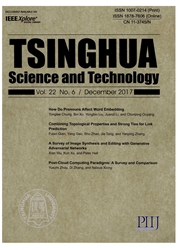

 中文摘要:
中文摘要:
Monitoring a computing cluster requires collecting and understanding log data generated at the core, computer, and cluster levels at run time. Visualizing the log data of a computing cluster is a challenging problem due to the complexity of the underlying dataset: it is streaming, hierarchical, heterogeneous, and multi-sourced. This paper presents an integrated visualization system that employs a two-stage streaming process mode. Prior to the visual display of the multi-sourced information, the data generated from the clusters is gathered, cleaned, and modeled within a data processor. The visualization supported by a visual computing processor consists of a set of multivariate and time variant visualization techniques, including time sequence chart, treemap, and parallel coordinates. Novel techniques to illustrate the time tendency and abnormal status are also introduced. We demonstrate the effectiveness and scalability of the proposed system framework on a commodity cloud-computing platform.
 英文摘要:
英文摘要:
Monitoring a computing cluster requires collecting and understanding log data generated at the core, computer, and cluster levels at run time. Visualizing the log data of a computing cluster is a challenging problem due to the complexity of the underlying dataset: it is streaming, hierarchical, heterogeneous, and multi-sourced. This paper presents an integrated visualization system that employs a two-stage streaming process mode. Prior to the visual display of the multi-sourced information, the data generated from the clusters is gathered, cleaned, and modeled within a data processor. The visualization supported by a visual computing processor consists of a set of multivariate and time variant visualization techniques, including time sequence chart, treemap, and parallel coordinates. Novel techniques to illustrate the time tendency and abnormal status are also introduced. We demonstrate the effectiveness and scalability of the proposed system framework on a commodity cloud-computing platform.
 同期刊论文项目
同期刊论文项目
 同项目期刊论文
同项目期刊论文
 期刊信息
期刊信息
